Best of the Earth Scan Laboratory
The Earth Scan Lab has produced a great deal of imagery and research from around the world. Select an item below to explore our best work.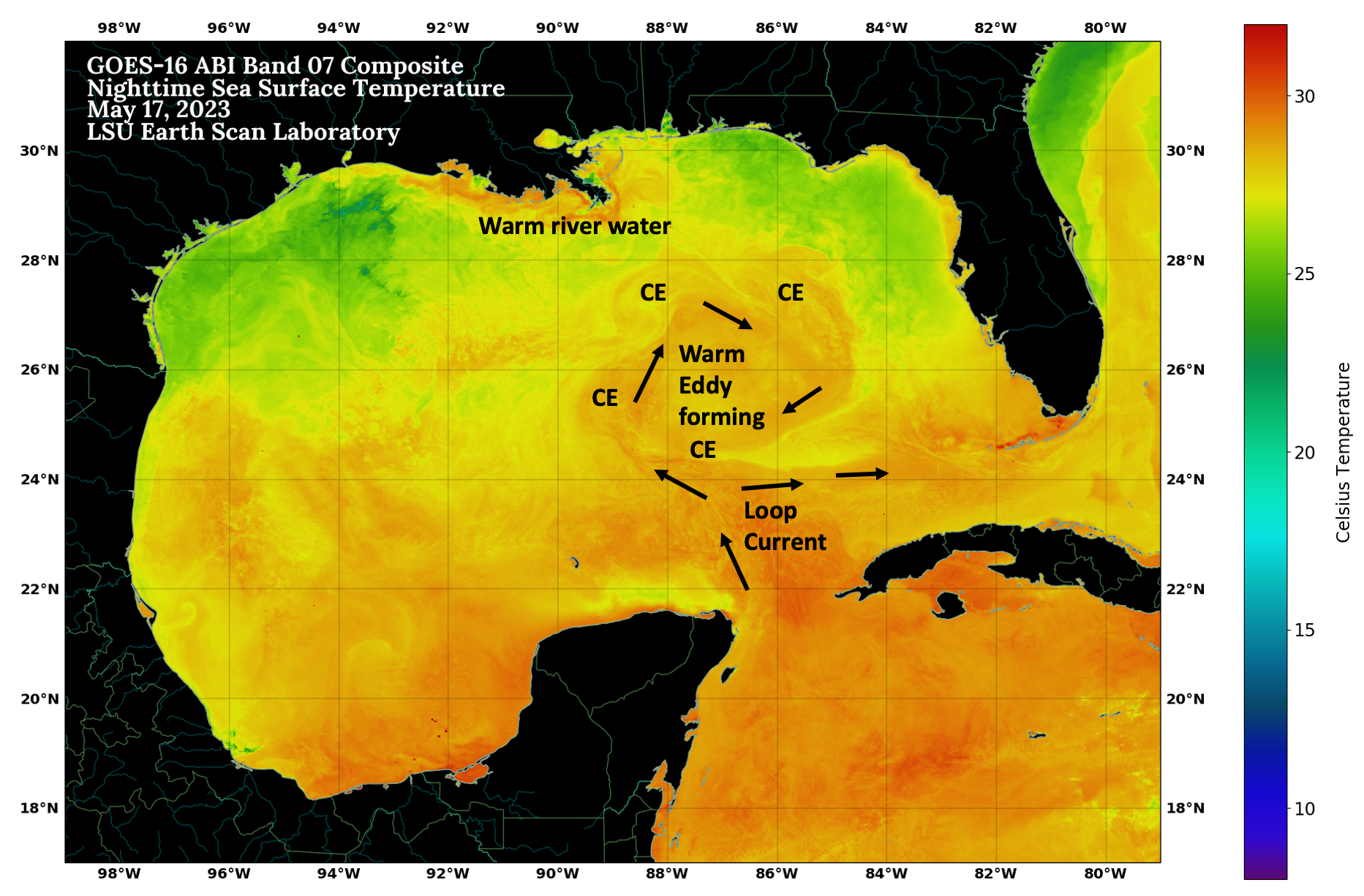
Image of the Week
Visit our weekly collection to view some of our very best images from each week.
ABI SST of Loop Current, May 2023
This GOES 16-ABI night-time ST composite from May 17, 2023 (left) shows water temperatures above 29 C (~84 F) along the Louisiana coast due to the rapid warming of a shallow buoyant lens of river water from the Mississippi and Atchafalaya Rivers on the continental shelf. A short animation of May 1-19 is shown at right. Intense solar heating in the absence of strong winds is responsible for these warm coastal waters. In deep water, a large Warm Eddy (also > 29 C) is seen to be forming from the northern portion of the Loop Current due in part to the intensification of cyclonic Cold Eddies (CE) along its margin. In contrast to the shallow layer of warm river water along the coast (~1-5 meters deep), the warm water within the high velocity Loop Current extends to about 100 meters deep, giving it the potential to intensify tropical storms and hurricanes that track over it, depending upon atmospheric conditions.


























































































































































































































































































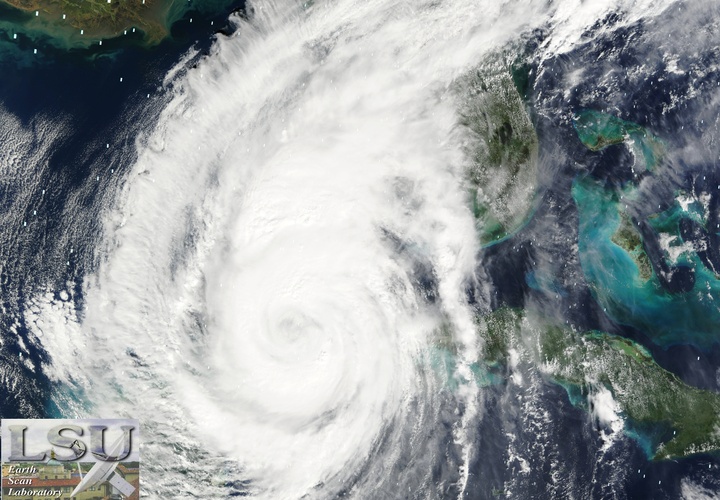
Galleries
See our gallery collections for various events and topics of interest
Our Best Image Galleries

Ocean Animations
See our best animations of the ocean in motion.
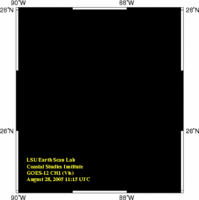
Atmospheric Animations
See our best animations of the atmoshpere and tropical systems.

Loop Current and
Frontal Eddies
The loop current and its frontal eddies greatly impact currents throughout the Gulf of Mexico. See more on these important processes here.
Studying the Loop Current at the ESL

The Gulf of Mexico Loop Current is one of the most dynamic ocean currents in the world. Walker and staff have developed specialized image processing techniques that provide better and more frequent SST retrievals in the Gulf to monitor these currents. Gulf currents are known to impact hurricanes.
The Loop Current and the warm-core eddies that separate from it are large reservoirs of heat that have the capability to intensify hurricanes and tropical storms crossing the Gulf. Conversely, Walker’s research has shown that cold-core eddies, which are regions of vigorous upwelling become energized by hurricane winds. In extreme cases, the cold water that is rapidly upwelled from ~60 m depth can immediately weaken hurricanes by cutting off their energy before landfall. During the Deepwater Horizon oil spill, our SST tracking capabilities led to the discovery of eddy merging along the Loop Current margin, an event that significantly changed oil spill motion.
In the summer months the loop current and its associated eddies can be difficult to detect by inspecting surface temperatures alone.
- Altimetry Animations
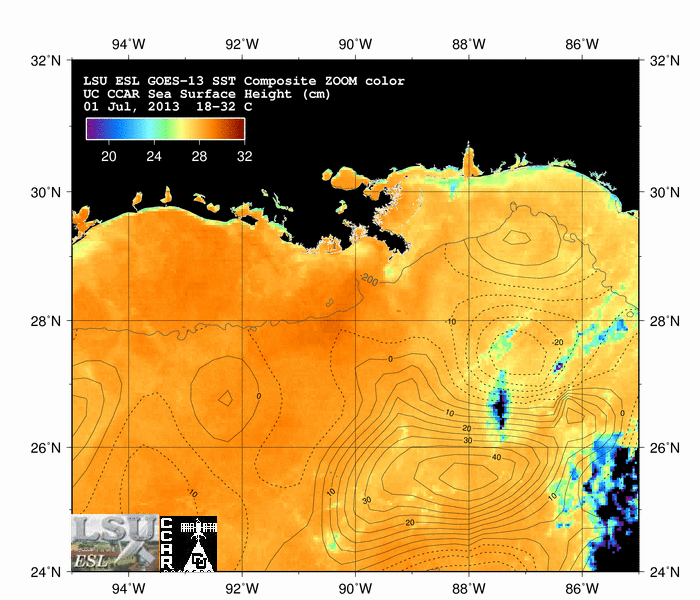
A warm core eddy below a cool cyclone during the summer of 2013
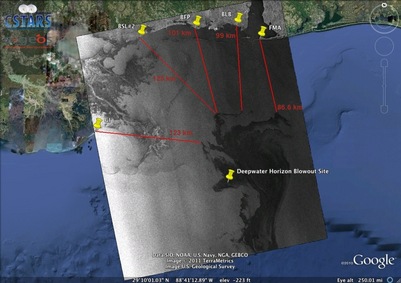
Deepwater Horizon
Learn more about our imagery of surface oil as well as research conducted with this data.
Deepwater Horizon Surface Oil
On April 20, 2010 the Deepwater Horizon (DWH) oil rig experienced a series of malfunctions and subsequent explosions that disengaged the rig from its drill and killed eleven workers onboard. The explosion damaged the wellhead 5,000 feet below the surface, and crude oil flowed from the damaged wellhead until a containment cap was put in place on July 15, 2010.
The Earth Scan Laboratory has been tracking the oil that reaches the surface of the Gulf of Mexico (GOM). The image to the right is a composite of three satellite images all captured around June 14, 2010: calculated sea surface temperatures captured by the MODIS sensor aboard NASA's Aqua-1 satellite with microwave imagery from Radarsat-1 and Envisat superimposed. See links below for surveillance of this environmental crisis.


Walker et al., 2011. AGU Monograph Series 195, 10.1029/2011GM001120, 103-116, 2011.







































